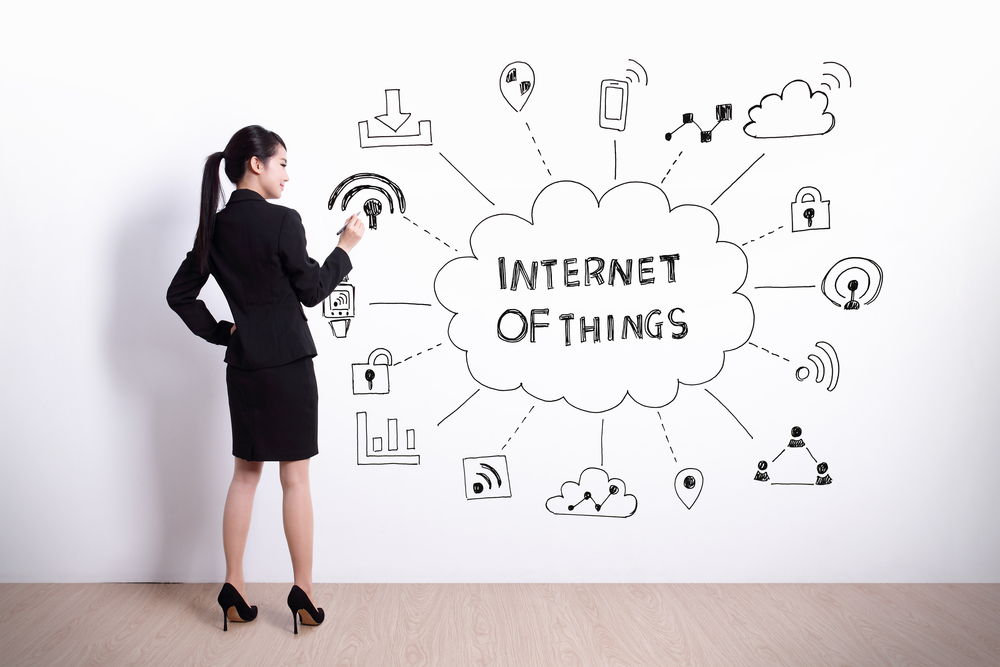From high street retailers to wholesalers in the supply chain, hyper-relevance is one of the hottest buzzwords in the retail industry. It refers to the kind of highly personalised marketing and promotion that’s only possible on a foundation of actionable, often unlinked, customer data.
So, not just identifying when someone’s a repeat customer and can be targeted with a special discount, but perhaps ascertaining that they’re about to go on holiday and will be shopping accordingly. Or recognising that they’ve purchased a new car and can be cross-sold other goods and services.
The hyper-relevance concept has, so far, has been applied primarily to retailers’ engagements with customers but it has come into sharper focus with the rise to prominence of the Internet of Things (IoT). The enhanced connectivity of a wide range of devices and the addition of the micro-sensors that fuel IoT, which can be attached to almost anything including cars and people, opens up a world of new possibilities for hyper-relevance.
The concept is no longer limited to marketing and promotion, instead applying to a range of other applications and processes. The principle of linking up masses of potentially disparate data to inform really targeted actions is one that can bring immense benefits throughout the retail chain. And it’s a principle that can be driven by the IoT.
Here, we’re going to take a look at three key areas in which the retail sector can use the IoT to shape hyper-relevant business practices.
A personal shopping experience
This is the traditional understanding of hyper-relevance – tailoring marketing activity to suit individual customers. We can see a great example at McDonalds Sweden, whereby an app provides personalised offers to the user based on the weather, the time of day, the location and their individual habits.
> See also: Gartner's top 10 Internet of Things technologies for 2017 and 2018
These data points are gathered from numerous different IoT touchpoints, analysed and united in order to, for example, offer a discounted cup of coffee on a cold morning before a long journey to work.
Another potential application is in reducing in-store queues. Sensors at the checkout can analyse queue length, while shoppers using the in-store app who abandon the queue can be immediately enticed back with an apology message and a special offer.
Supermarkets have long used Queue Management Systems, staffing their checkouts according to how many shoppers are instore and how long they are likely to take, but these have generally relied on people counting sensors at the store entrance. Data from a supermarket app held by every shopper, coupled with mobile and beacon communications, could provide far more intelligent and tailored predictions.
Delivery and distribution
The logistics industry is well-placed to maximise the potential of the IoT. Here, hyper-relevance enables companies to fit to their customers’ routines, not the other way around.
DPD for instance has launched its Track My Parcel application, an industry-first innovation, which enables customers to watch the progress of their delivery on a real-time map, providing a final 15 minute time slot.
The customer is constantly kept up to speed with their delivery, even receiving information such as their driver’s name and their position in the delivery queue. It isn’t a hug leap to imagine a scenario whereby real-time data from IoT touchpoints like Oyster card readings and gym check-ins enables delivery drivers to predict exactly where a customer will be at different times of day – and therefore match deliveries to their routines.
We could soon be seeing firms like Amazon using this information to ensure that parcels are waiting for the customers at the gym, or the railway station, or the office as appropriate. More explorations of how the IoT could empower ‘last mile’ delivery options are explored in DHL and Cisco’s 2015 IoT in Logistics report.
Workforce management
Hyper-relevance does not, however, have to be directly related to customers. As this article argues, if Human Resources Information Systems (HRIS), workforce management and payroll operate collectively in an IoT ecosystem, then there are huge opportunities for driving greater efficiencies, especially for large, multi-site retailers. Workforce planning, particularly during peak sale periods, becomes easier.
> See also: 4 things the IoT will make redundant in everyday security
Even workplace design can be influenced by the IoT, ensuring that stores are laid out in ways that are effective for staff as well as employees.
The IoT also has great potential for enabling learning and training to be tailored according to the profile and performance of different stores. Using IoT touchpoints to track customer behaviour in different stores at different times of day and year can provide rich data for informing staff training programmes – and indeed, wider business strategy. In this way, staff management, training and development can take place on a store by store – and therefore hyper-relevant – basis.
Knowledge is power
So the old saying goes. The winning retailers of tomorrow will be those that than can make sense of the huge volume of data generated by the IoT – and tailor it in myriad hyper-relevant ways.
Sourced from Mark Thornton, marketing director, Maginus










